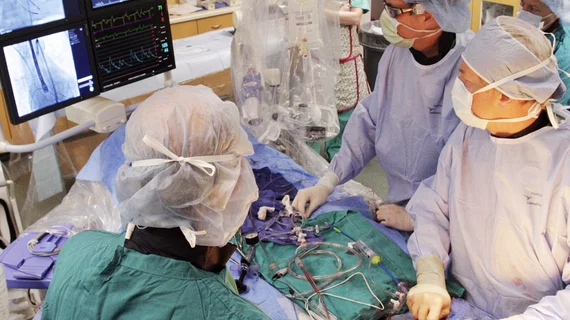Severe prosthesis-patient mismatch after TAVR linked to a higher risk of death
Severe prosthesis-patient mismatch (PPM) after transcatheter aortic valve replacement (TAVR) is associated with a consistently higher risk of death, according to new findings published in JACC: Cardiovascular Imaging.[1] This is not the case, however, with moderate PPM after TAVR.
The study’s authors noted that surgical aortic valve replacement (SAVR) is known to make a significant impact on patient outcomes. When it comes to TAVR, however, less is known about the long-term effects of PPM.
“Although there is consistent evidence of the negative impact of PPM on outcomes after SAVR, the evidence of association between PPM and poor outcomes after TAVR has been conflicting,” wrote first author Michel Pompeu Sá, MD, PhD, of the Lankenau Heart Institute in Wynnewood, Pennsylvania, and colleagues.
The group aimed to find some answers, performing a meta-analysis on nearly 82,000 TAVR patients who originally participated in one of 23 clinical studies. Echocardiography results were used to define the severity of PPM. PPM was defined as moderate when the indexed effective orifice area (iEOA) was between 0.65 and 0.85 cm2/m2. It was defined as severe when the iEOA was lower than 0.65 cm2/m2.
Overall, PPM was seen in 23.9% (19,612) of patients included in the meta analysis. Moderate PPM was seen in 24.1% of patients, and severe PPM was seen in 10.9%. Moderate and severe PPM were both associated with a higher risk of mortality for the first 30 months after TAVR. However, just severe PPM was linked to “an increased and constant risk of mortality compared with no PPM over time.”
Sá et al. noted their research was not specifically focused on identifying ways to reduce the risk of PPM, but they did have some ideas. For instance, they wrote, supra-annular heart valves may limit PPM after TAVR compared to intra-annular devices. “Postdilatation and valve oversizing” were two other techniques the author suggested as potentials ways to reduce a patient’s risk of PPM.
“The results of the present study suggest that severe PPM, but not moderate PPM, is associated with higher risk of mortality following TAVR,” the group concluded. “These results provide support to implementation of preventive strategies to avoid severe PPM following TAVR.”

